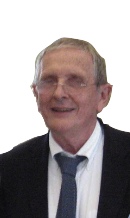Robin Matthews is professor at universities in London and Moscow; consultant with international companies; writes on business, economics; and finance: creative imagination techniques in management.

globalisation and postmodern globalisation
Globalisation and Postmodern Globalisation
Globalisation has had many faces. Romans probably thought their empire was global. Or should be. Problems on the border. Always. Spain’s Empire was pretty much global; Europe, America, the Holy Roman Empire. Bullion, Spanish, Portuguese or pirated, inflated European and except for barter, global inflation.
The British Empire was global: teachers pointed out red blobs all over the globe; ‘The sun never sets on the British Empire,’ they told credulous unbelievers.
Pre industrial capitalism, mainly commercial included, debt, drugs, weapons, slaves and financial crises. Trade networks, disease and plague were global; more so, when transported back and forth the Atlantic and Pacific.
Industrial capitalism. Volume, variety and value of goods and chattels, finance and leverage increased. Europe temporarily dominant.
The Gold Standard. Global money. In late nineteenth century and up to 1914, a global financial and commercial system existed. In the armistice between World War 1 and 2, the twenties and thirties, nations sunk into nationalism, protectionism, communism, fascism, financial and industrial crises, appeasement and fellow travelling.
In the Cold War, regional trading blocs emerged, the European Iron Steel Community, the Common Market, the EU, NAFTA, and stabilising institutions, Bretton Woods, the World Bank, the IMF, the UN, the ILO, NATO, the Warsaw Pact.
In 50’s and 60’s, Walt Rostow announced the dawn of the Age of High Mass Consumption for the minority and President Eisenhower, the Military Industrial Complex.
Globalisation took off in the West in the 70’s and 80’s. Financial and currency deregulation, and revolution in information, communication, nano and bio technologies, medicine and urbanisation. Transnational corporations, private/private, public/private, public/public, alliances, acquisitions mergers, partnerships (rechristened initiatives) emerged with regional, national, local affiliates, SME’s or big domestic businesses.
Criminal networks merged with, allied with, linked with, networks of state funded terrorists, fundamentalists, gun–runners, mercenaries, security agencies, drug cartels and the Military Industrial Complex. Regional (perhaps) in the Cold War, and after Perestroica, global.
No global superpower but global superpower networks, competing, colluding oligarchs and oligopolists.
Back to the past; BRI(I)CS, N-11, CIVETS and MINTS no longer underdogs. Perhaps.
Global GDP takeoff.
Average differences in income and wealth shrink between states. Within states, differences expand in power laws; scale free; fractals, differences within classes, and within classes within classes and within.....like proportionally identical Russian dolls. The top percentile of a group earns the vast proportion of the income of the group and owns the vast proportion of the wealth: on every scale, few fat cats, many thin, many more thinner.
Capacity to supply exceeds demand. Dynamic global capitalism breeds more dynamic producers than customers, because the powerful distribute income and wealth to themselves. And they have lower (propensities for) consumption than the (more numerous) rest of their group.
But a carer, a hospital cleaner, a garbage collector, adds more value, it appears, than a banker, a tax accountant (or evader), or a corporate lawyer.
Despite recession/depression beginning in 2008 (perhaps ended, 2014, let’s see), the downside of global finance, and deadweight loss of up to three years global output, protectionism hasn’t happened. Good news.
Instead balance sheet defying strategies; aspirations of GPD growth based universal current account surpluses (export exceeding import values) everywhere. Some hope.
What used to be monopoly, is now is now, misreading Darwin, competitive advantage. Over whom?
What is new about the current phase of globalisation?
Globalisation post 1980 is more paradoxical: believers and paranoiacs, the indifferent in between; right wing, left wing, radicals, revolutionaries, conservatives, bankers, Wall Street protesters, bombers, clerics; businesses large and many small, mega rich, mini rich, mega poor; distribution according to power laws; board rooms, sweatshops, call centres, stars, refugees, scapegoats, puritans, mercenaries, pornographers, minimum wage truants, arms and drugs dealers and speculators.
Celebrities. Saints.
Bonuses for losses.
An image from Vaclav Havel: a Tokyo shop window, a plastic Santa Claus, in blood red robes, nailed to a cross.
Signals, symbols, signs, signifiers, information bits, messages soaked in media; sound bites, images, CD’s, CDO’s, CDW‘s, pixels; Morse, digital, quantum, pictorial, electro chemical transmitters. Receivers, addressees, decode, interpret; see, touch, feel, hear, smell; wired into cultural, social and personal grammar; memes and their artefacts.
And transnational businesses and religions, and too big to fail banks, gravity centres of small world networks, every one with regional, national and local branches, stems for countless business, social, friendship networks within networks.
Self similar.
Fractal webs.
Systemic risk.
Interdependence. Only small amounts bring instability, self ordered criticality.
Paradox. In the limit, interdependence is unity. Dreams within dreams; Inception, Groundhog Day.
Was it always like this? If change is exponential with time, it gets bigger.
Per Bak’s image. A global sand pile, sensitively dependent on tiny, accidentally or intentionally targeted shocks.
A carnival of politicians, psychopaths, CEO’s, celebrities, dictators, bureaucrats and destitute; jihadists, criminals, war lords, bishops, mullahs, money launderers, refugees, and We, in a postmodern, post industrial, integrated, fragmented, nano-technological global local super complex system (state).